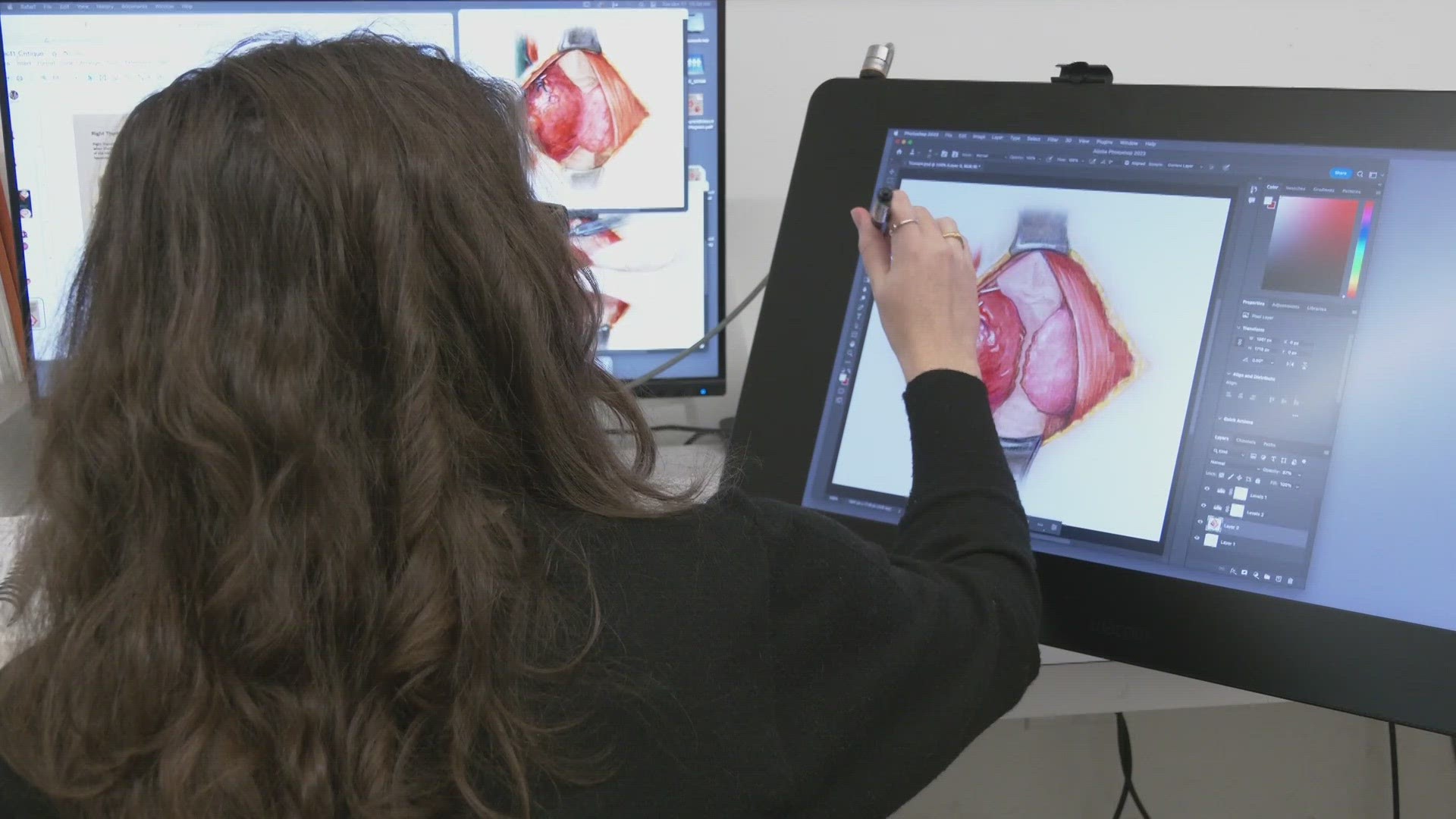CLEVELAND — The melding of science and art is proving to be an unlikely, but needed partnership as medical renderings become needed more often in the health field.
"I can actually go into a scientific field and still explore the artistic side of myself," said Lilly Oldham, a senior at the Cleveland Institute of Art.
Oldham discovered her passion in drawing realistic colored pencil images, while in high school. She also enjoyed science. A visit to the medical illustration program at CIA showed her she can do both.
"I kind of discovered that there was a way to combine my passion for realistic drawing with my enjoyment of science and learning and medicine," Lilly said.
Medical and life science illustration helps explain surgeries, scientific discoveries or teaches us something in a museum. But the most important thing it must be, is accurate.
"If it's the prettiest picture in the world, but it's wrong. It's not doing its job, and everything that we do has some type of job to it. Everything educates in some way,” explained Thomas Nowacki an Associate Professor and Chair of Life Sciences Illustration at the Cleveland Institute of Art.
The profession makes complex ideas easier to understand.
"So you have to tell a story with limited labels, limited text, and then the illustration itself has to show something," Nowacki said.
It requires a large amount of research and high-level science courses.
"You know, you have to be a lifelong learner. You have to enjoy being a lifelong learner," said Nowacki.
"I love just kind of finding out everything I can about something, and then being able to turn that into a piece that looks really cool and is really informative is a really cool experience for me," said Vivian Wattle, a junior at CIA.
Students begin with a traditional drawing you would find in books, then progress to digital renderings. Wattle is working on creating blood vessels.
"I've been getting used to digital,” said Wattle. “I used to hate it, but now I'm really starting to enjoy, like using Photoshop and Illustrator to do digital renderings."
You'll find only a handful of medical illustration programs like this. CIA's advantage? Location.
By being in University Circle, it's close to hospitals and the Cleveland Natural History Museum. Seniors, like Oldham, can observe surgeries from inside the operating room, which was one of her favorite things.
"So to go in there and be able to just kind of stand to the side and watch and draw what they're doing, it's a really incredible experience," stated Oldham.
For her senior project Oldham is creating images to explain a rare brain and spine cancer found in younger patients.
“There's a very, very, very severe lack of patient education material that is understandable to the average person,” explained Oldham talking about the disease.
Oldham’s older sister was diagnosed with the cancer in 2019.
Graduates from the CIA Biomedical Art and Life Science Illustration program have found careers at hospitals, research institutes and sound have found work in the entertainment industry.

